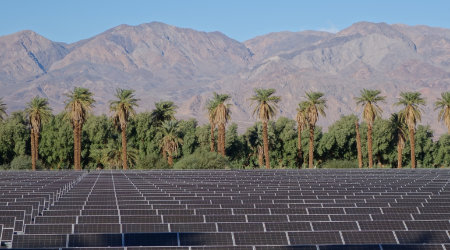Understanding California's New Green Building Standards
California's standards will accelerate decarbonization as they promote energy efficiency and renewable energy, as well as the increasing electrification of buildings
The drive toward decarbonization of buildings in California is in full force and is now greatly accelerating. It harkens to a future of all electric building construction.
Every three years, the California Energy Commission (CEC) adopts standards to increase the energy efficiency and lower the carbon footprint of buildings. It did so in grand fashion in August 2021. Its recommendations will now head to the California Building Standards Commission for adoption in December 2021. This will be a first in the nation set of building codes to require solar photovoltaic (PV) and onsite battery storage for many commercial, non-residential and multifamily buildings. It expands on similar requirements for single family homes adopted in 2018.
When will the new standards apply?
If approved in December 2021, the new codes will apply to buildings for which the permit application is submitted to any local building department in California on or after January 1, 2023.
What types of buildings are affected?
The new standards will apply to a broad range of public and private buildings. Among the building types that will be subject to the new mandatory requirements are retail and grocery stores, schools, offices, financial institutions, libraries, office spaces in warehouses, low rise multifamily buildings, high rise multifamily buildings, auditoriums, hotels, motels, restaurants, theaters, medical offices, and clinics. Importantly, the new requirements are for new construction only. They do not apply to improvements or alterations to existing buildings.
What types of measures will be required?
The new building standards focus on four key technical areas. The first is the addition of photovoltaic and battery storage systems to move the state toward its goal of 100 percent renewable energy, non-fossil fuel, electricity grid. The measures seek addition of systems sized to maximize onsite use of solar energy and avoid electricity demand during times when the grid must use gas-powered plants. The second is addition of efficiency measures for the entire building. There are measures focused on addition of electric heat pump technology for space and water heating to reduce emissions from gas-powered units, and new ventilation standards to improve indoor air quality. These measures also include mandatory indoor lighting controls, occupancy and motion sensors, maximum wattage for certain interior areas, new duct work and sealing, special rules for refrigerated areas such as automatic door closures, special rules for computer rooms, process boilers and fans. A third area focuses on new measures for commercial greenhouses, indoor growing, controlled horticulture and in particular cannabis production. Lastly, the new standards focus on establishing electric-ready requirements for single-family homes to position owners to use cleaner electric heating, cooking and electric vehicle (EV) charging options so electric appliances can eventually replace installed gas appliances.
The precise set of technical requirements can be found in the rulemaking text itself here.
Are there exceptions?
There are some limited exceptions to these new building code standards. Some of those exceptions include smaller buildings (<5,000 sf), buildings with smaller roofs, buildings in areas with high snow loads, buildings located in certain California climate zones, and certain buildings in areas without Virtual Net Metering or a community solar program.
Conclusion
All these building standards measures are designed so battery storage can be easily added to the already existing solar system in the future as well as incentives to eliminate natural gas from new buildings. The Energy Commission believes these measures will reduce the state’s reliance on electricity as a whole. Buildings current account for nearly 70 percent of California’s electricity use. The Energy Commission also believe these measures will reduce California’s carbon footprint as it is estimated that buildings are responsible for 25 percent of the state’s greenhouse gas (GHG) emissions.
Part of the drive to require onsite battery storage is also driven by California’s future of rolling blackouts due to need to stop the spread of wildfires and a need for buildings to be able to survive off the grid during those wildfire emergencies.
Lastly, it should be noted that local building departments will be applying and enforcing these new building standards as new permits arrive on their desks after January 1, 2023. They will become the de facto minimum building standards statewide. However, after each tri-annual statewide update, many cities and counties choose to adopt standards that exceed the state minimum. The California Green Building Standards (“CALGreen” or Part 11 of Title 24) include voluntary reach standards, which offer model building code language for local governments that wish to go beyond the minimum statewide requirements.
Maureen F. Gorsen is a partner with Sidley Austin LLP in Century City, California. She practices at the intersection of public policy, litigation, and regulatory advocacy with a keen sense of her clients’ business objectives. She may be reached at maureen.gorsen@sidley.com.
Related Topics:












